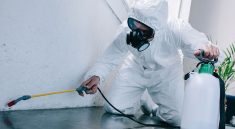In both urban and suburban settings, skunks have emerged as unwelcome visitors, drawn by the allure of easy food sources and shelter. While these nocturnal creatures play a role in the ecosystem, their presence can lead to significant challenges for homeowners and businesses alike. The pungent odor associated with skunks not only permeates the environment but can also lead to health risks, particularly for pets and individuals with sensitivities. Effective skunk control is essential to mitigate these issues, and professional skunk trapping has become a vital solution. This method not only ensures the humane removal of these animals but also addresses the underlying problems that attract them to properties. By employing skilled wildlife management experts, property owners can safeguard their spaces from the potential damages and health hazards associated with skunk infestations. In this article, we will delve into the importance of professional skunk trapping, exploring its effectiveness in odor elimination and risk reduction, while also highlighting best practices and preventative measures that can be implemented to maintain a skunk-free environment. Understanding the intricacies of skunk behavior and effective trapping techniques is key to creating a safer, healthier living space for all.
Understanding Effective Skunk Trapping Techniques
Effective skunk trapping requires a strategic approach that considers the animal’s behavior, habitat, and preferences. Traps should be placed in areas where skunks are known to frequent, such as near food sources, burrows, or along common pathways. Utilizing bait that appeals to skunks, such as canned cat food, peanut butter, or fruit, can significantly increase the likelihood of attracting them to the trap. Additionally, it is crucial to select traps that are appropriately sized and designed to securely contain the animal without causing harm or distress, ensuring both the safety of the skunk and the person handling the trap.
Once a skunk is successfully captured, it is important to handle the situation with care to avoid the risk of being sprayed, as skunks are known for their potent defensive spray. Wearing protective gear and using a blanket or tarp to cover the trap can provide a safeguard during relocation. Local wildlife regulations should be adhered to, as proper relocation practices may vary by region. By employing these effective skunk trapping techniques, homeowners can mitigate the risks associated with skunk presence, while also addressing potential odors and health concerns associated with these nocturnal creatures.
Safety Precautions During Skunk Trapping
it is essential to maintain a safe distance from the trapped skunk to prevent any potential injury. Approach the trap slowly and avoid any sudden movements that may startle the animal. Always ensure that the trap is securely closed and monitor it regularly to minimize the duration of confinement. In addition, keeping pets and children away from the trapping area is crucial, as their presence may provoke the skunk, increasing the risk of an aggressive response.
Before setting any traps, it is advisable to familiarize oneself with local wildlife laws and recommendations to ensure compliance and ethical treatment of the animal. Additionally, having a plan for the safe release or transport of the skunk is vital, as improper handling can lead to stress for both the skunk and the trapper. Educating oneself on skunk behavior and employing proper trapping techniques will not only enhance the effectiveness of skunk trapping but also promote a safer environment for all involved.
Long-Term Solutions for Skunk Odor
Addressing skunk odor effectively requires a multifaceted approach that goes beyond immediate solutions. One long-term strategy involves the implementation of preventive measures around residential areas, such as installing motion-activated lights or ultrasonic repellents that deter skunks from approaching. Additionally, securing garbage cans, compost bins, and pet food can significantly reduce attractants that bring skunks into the vicinity. Landscaping changes, such as removing dense brush or low-hanging fruit that provide shelter, can also play a crucial role in making properties less appealing to these animals.
Furthermore, adopting regular maintenance practices can aid in odor management. For instance, promptly cleaning areas where skunks have been known to frequent, using enzymatic cleaners to break down the odor molecules, can help mitigate lingering smells. Building awareness within the community about skunk behavior and the importance of coexistence can foster a more proactive approach to wildlife management. By combining effective skunk trapping with these long-term solutions, residents can significantly reduce the risks associated with skunk encounters and minimize the impact of skunk odor on their properties.
In conclusion, professional skunk trapping is an essential service for homeowners and businesses seeking to mitigate the unpleasant odors and potential risks associated with skunk infestations. Utilizing expert techniques and knowledge of skunk behavior, trained professionals can effectively remove these animals while ensuring minimal disruption to the environment. By addressing skunk issues promptly and responsibly, property owners can not only restore their spaces to a more pleasant state but also protect their health and property. Investing in professional skunk trapping is a proactive step towards maintaining a safe and odor-free living environment.




